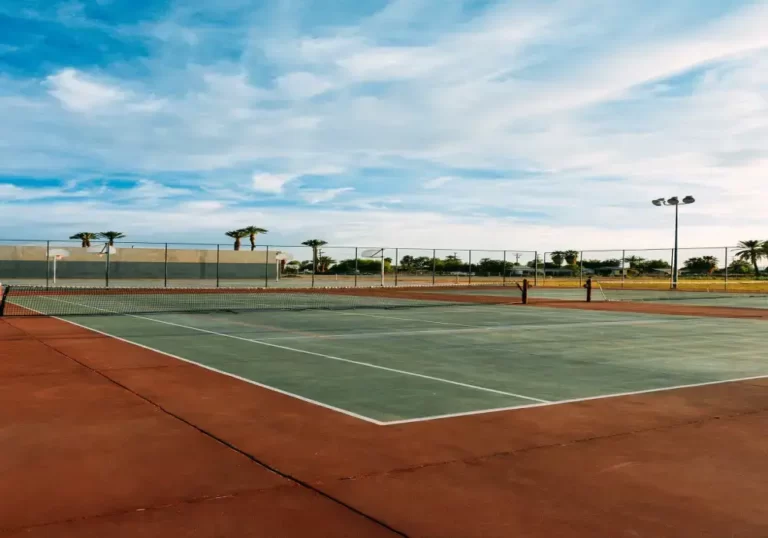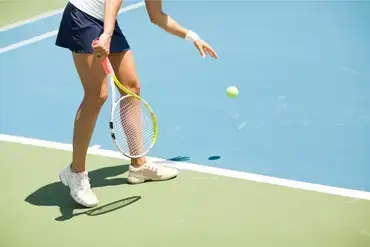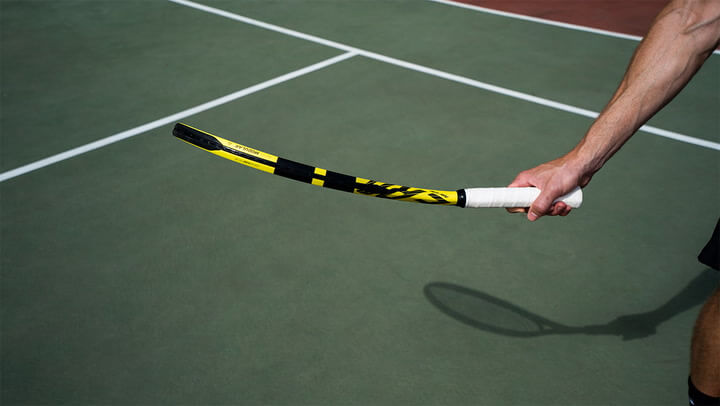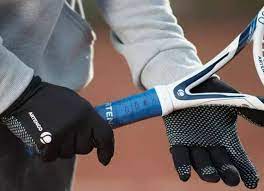When Do You Switch Sides In Tennis?
Tennis is a game of skill, finesse, and strategy. Changing sides during a game is another essential consideration frequently ignored. Like me, if you enjoy the game’s suspense, the rush from a well-placed shot, and the fulfillment from a flawless serve.
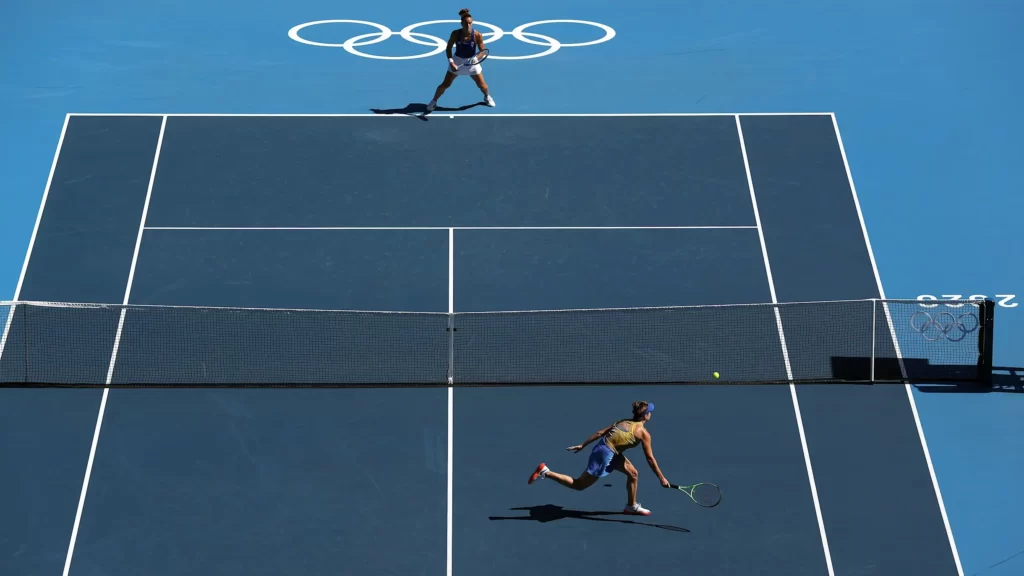
How about the question, “When do you switch sides in tennis?” So, stop wondering now! This article delves into the specifics of switching sides during a tennis match. We have you covered for everything from the fundamental guidelines to tactical considerations.
So let’s get started by grabbing your rackets!
The Basic Rules of Switching Sides

Alright, let’s first understand the basic rules of this topic. Tennis has established rules about when players should switch sides. Let’s dissect it step-by-step:
1. Understanding Game Length
Typically, professional tennis matches are played in sets. The number of games in a set varies based on the difficulty level of play and is made up of a sequence of games.
The set is often played to the best of five games in men’s singles matches but to the best of three games in women’s singles and all doubles matches.
2. Changing Sides at the End of Each Set
Players are forced to exchange sides of the court when each set is finished. This procedure guarantees that one player will not be adversely affected by external elements like wind and sunlight.
3. Switching Sides During a Tiebreak
Players alternate sides every six points during a tiebreak when the set score hits a particular threshold. This guarantees that both players encounter comparable difficulties at crucial moments.
Changeover Rule
Below is a table summarizing the changeover rules in tennis:
| Changeover Rule | When to Switch Sides | Break Time |
| After the first game | Players switch sides | Timed break allowed |
| Sum of game scores is odd(e.g., 2×1, 3×0, 4×3, 6×5) | Players switch sides | Timed break allowed |
| First changeover of each set(e.g., 1×0) | Players stay on their current sides | No sitting allowed |
| During the timed break | Players can sit down on their chairs | Timed break allowed |
During changeovers, players adhere to these rules to ensure fairness and equal exposure to environmental conditions. The timed breaks allow players to rest and regroup before continuing the match. It’s a strategic aspect of tennis that players use to their advantage throughout the game.
The Importance of Switching Sides

Now that we know the fundamental guidelines, let’s examine the significance of switching sides in the game.
1. Equalizing Environmental Factors
Tennis is frequently played outside, subjecting players to a range of weather. Players can make sure they experience the same difficulties from both directions, such as wind and sunlight, by switching sides.
2. Psychological Impact on Players
Players may benefit psychologically from side adjustments, which allow them to pause and recollect. Players can gather their wits and return stronger after a small break in the tough competition.
Strategic Considerations

The rules specify when players should transfer sides, but it’s also crucial to comprehend the strategic ramifications.
1. Adapting to Sunlight and Wind
When playing outside, the sun’s position and the wind’s flow can significantly impact the ball’s trajectory. Players can change their game and account for these environmental conditions by switching sides.
2. Assessing the Court Surface
Tennis courts can have various playing surfaces, including complex, clay, or grass. Distinct surfaces have distinct effects on how the ball bounces and moves. Players can more easily adjust to court conditions by switching sides.
3. Capitalizing on Your Opponent’s Weakness
The flow of your opponent can be broken with a well-timed side switch, especially if they have a weak side. You can gain an advantage over your competitors by observing their tendencies and taking advantage of their weaknesses.
I have included a Quora link to explore discussions on side changes in tennis. There, you can find insights and experiences many people share about this aspect of the game.
Maintaining Focus During the Switch

It’s essential to maintain momentum during the side change. Here’s how you can stay in the Zone:
1. Staying in the Zone
Use the side change to reinforce your game plan and stay focused on your strategy. Avoid getting distracted by the surroundings or the crowd.
2. Quick Physical Regeneration
Take a few sips of water during the side change, catch your breath, and stay physically active to maintain your momentum.
When to Switch Sides in Doubles Matches?
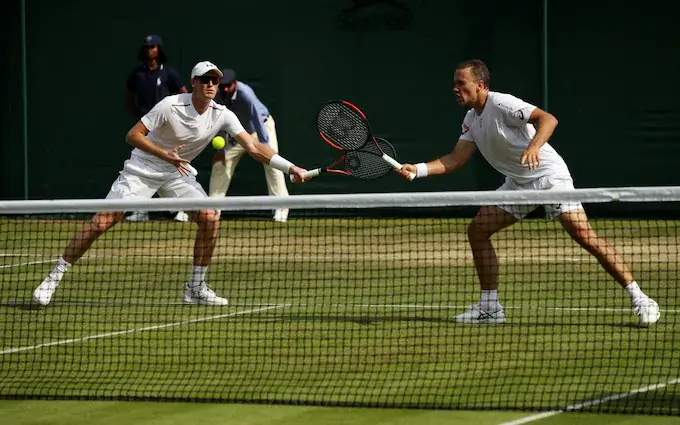
If you play multiple sets, you can switch sides as a new set begins. In each set in doubles, you and your partner can decide who serves first. Make sure to alternate service turns after that. It would be best to always serve after the fourth game when playing doubles. Doubles matches have their considerations when it comes to side changes.
1. Alternate Sides or One Player Stays?
In doubles, there are two options: either players switch sides together, or one player stays on the same side while the other changes. Both strategies have their merits, and it’s essential to communicate effectively with your partner.
2. Communication with Your Partner
Coordinate with your doubles partner during the side change. Discuss tactics, encourage each other, and stay on the same page to enhance teamwork.
I have included a YouTube video link for you to access valuable insights and practical tips on how and when to switch sides. This video will likely provide you with helpful information.
How and When to Switch Sides | Doubles Tennis
Challenges Faced When Switching Sides

Switching sides in tennis is a crucial aspect of the game, but it challenges players. Some of the common challenges faced during side changes include:
1. Disruption of Rhythm
Switching sides can disrupt a player’s rhythm and momentum, mainly if they perform well on a particular side. It takes some time to readjust to the new court orientation.
2. Environmental Changes
As players switch sides, they might encounter different environmental conditions, such as changes in wind direction or the sun’s angle. Adapting to these variations can be challenging.
3. Psychological Impact
The side change can also psychologically impact players. It offers a brief pause in the intensity of the match, which can either help them regroup or cause a loss of focus.
4. Physical Fatigue
During extended matches, players may experience physical fatigue, and the side change requires them to recover and maintain their energy levels quickly.
5. The pressure of Score
Depending on the scoreline, players might feel additional pressure during side changes, especially in critical moments like tiebreaks or decisive sets.
I have provided a Reddit link to explore discussions about when to switch sides in tennis. In this link, you can find valuable insights and experiences various individuals share.
Best Practices for Smooth Side Switching
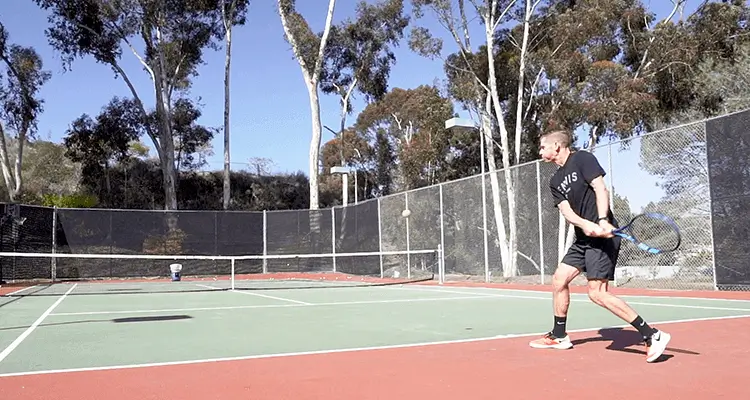
Efficient side switching ensures a seamless transition during the game.
1. Gather Your Belongings Efficiently
Be organized and quickly gather your belongings during the side change. Wasting time can disrupt your focus and rhythm.
2. Observe Court Etiquette
Respect the game and your opponent by following court etiquette during the side change. Avoid any unnecessary delays or distractions.
3. Stay Hydrated and Energized
Keep yourself hydrated and nourished during the match. Proper nutrition and hydration play a significant role in maintaining your performance.
Common Mistakes to Avoid

Tennis players should be aware of several typical errors they frequently commit. These mistakes can affect performance and impair on-court success. Players can improve their performance and maintain their competitive edge by being aware of and avoiding these hazards. Knowing the pitfalls can help you steer clear of them during side changes.
1. Delaying the Side Change
Stay on your feet when switching sides. Promptly move to the other side of the court to keep the game flowing smoothly.
2. Breaking the Tempo
Avoid engaging in unnecessary conversations or distractions that may break your concentration and affect your gameplay.
Frequently Asked Questions
1. Does switching sides in tennis make a difference?
Absolutely! Switching sides helps equalize environmental factors and allows players to regroup, making it a vital game aspect.
2. Can I take a more extended break during the side change?
While there’s a time limit for side changes, it’s best to keep the break short and stay in the game’s flow.
3. How do I adapt to different court surfaces during side changes?
During warm-up, pay attention to how the ball bounces and moves on the court surface. Use the side change to adjust your game accordingly.
4. Should I communicate with my doubles partner during the side change?
Absolutely! Effective communication with your partner can enhance your coordination and overall performance.
5. What should I do if my opponent takes too long during side changes?
Stay patient and focused. Please remind them of the time limit for side changes if necessary.
Conclusion
Switching sides in tennis is more than just a technicality; it’s a strategic move that can turn the game’s tide. By adhering to the rules and understanding the nuances, you can use side changes to your advantage. Embrace the opportunity to regroup, adjust your tactics, and maintain focus. So, the next time you find yourself on the tennis court, remember the significance of switching sides, and make it work for you!
REFERENCES
- https://tt.tennis-warehouse.com/index.php?threads/after-a-tiebreak-which-side-do-you-start-back-on.510808/
- http://s3.amazonaws.com/ustaassets/assets/436/15/rule__etiquette_booklet.pdf
- https://www.usta.com/en/home/improve/tennis-rules/national/can-i-change-the-serving-order-in-doubles.html
- https://www.quora.com/After-a-tennis-tiebreak-is-done-do-you-always-switch-sides-of-the-court-after-If-so-what-is-the-pattern-for-switching-sides-in-the-games-after


